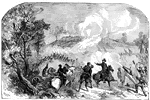Clipart tagged: ‘battle of Gettysburg’

Final Charge at Gettysburg
The final charge of the Battle of Gettysburg. Both the Confederates and the Union lost thousands of…
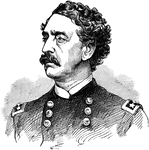
Abner Doubleday
Abner Doubleday (June 26, 1819 – January 26, 1893) was a career United States Army officer and…
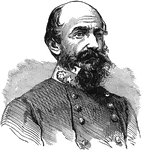
Richard Stoddert Ewell
Richard Stoddert Ewell (February 8, 1817 – January 25, 1872) was a career U.S. Army officer and…

Battle of Gettysburg
"Battle of Gettysburg, Cemetery Hill during the attack of the Confederates, Thursday evening, July 2nd,…

Battle of Gettysburg
"Battle of Gettysburg- charge of the Confederates on Cemetery Hill, Thursday evening, July 2nd, 1863.…

Battle of Gettysburg
"The Battle of Gettysburg, Friday morning, July 3rd, 1863. In our illustration may be studied the struggle…

Battle of Gettysburg
"Invasion of Pennsylvania- Battle of Gettysburg, Friday, July 3rd, 1863."— Frank Leslie, 1896

Where the Battle of Gettysburg Began
The Battle of Gettysburg (July 1-3, 1863), fought in and around the town of Gettysburg, Pennsylvania,…

The Soldiers' Monument at Gettysburg
The monument erected to remember the soldiers who fought at the Battle of Gettysburg.

Battleground of Little Round Top
Little Round Top is the smaller of two rocky hills south of Gettysburg, Pennsylvania. It was the site…
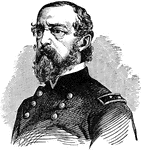
George Gordon Meade
George Gordon Meade (December 31, 1815 – November 6, 1872) was a career United States Army officer…
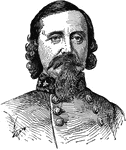
George Edward Pickett
George Edward Pickett (January 16, January 25 or January 28, 1825 – July 30, 1875) was a career…
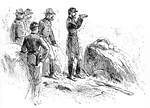
Little Round Top
A war council at the top of Little Round Top in Gettysburg, Pennsylvania. It was the site where the…
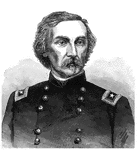
General Gouverneur K. Warren
"General Warren, born in Cold Spring, N. Y., January 8th, 1830, died in Newport, R. I., August 8th,…
